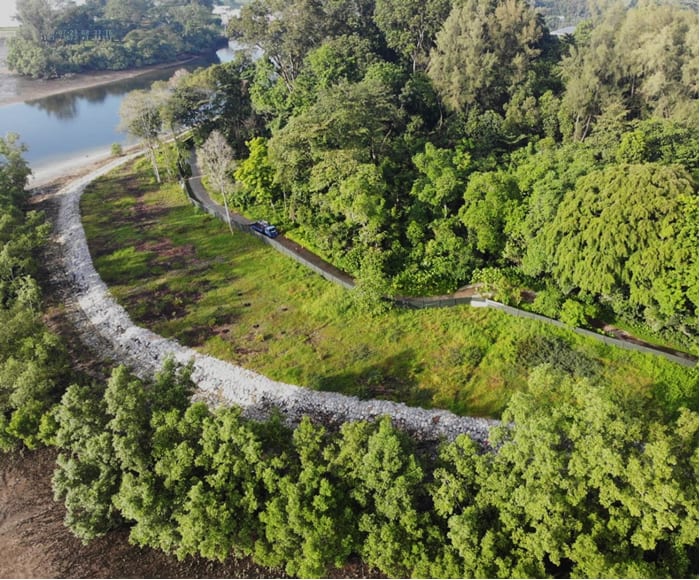Coastal protection projects to build resilience of Singapore’s coastlines at Pulau Ubin
SINGAPORE: The National Parks Board (NParks) will implement “nature-based solutions” to build the resilience of Singapore’s coastlines at Pulau Ubin, it announced on Saturday (Sep 25).
A nature-based solution refers to the use of nature to tackle socio-environmental challenges to benefit both humans and biodiversity.
An upcoming coastal protection project will be along approximately 2.2km of the northern coastline of Pulau Ubin, complemented by a mangrove restoration project at Sungei Durian, located along Pulau Ubin’s southern coastline.
“By planting trees and shrubs, as well as enhancing and restoring our mangroves along our coasts, we can help to defend ourselves from rising sea levels, while at the same time, providing key habitats for marine and coastal species to thrive,” said Minister for National Development Desmond Lee at the launch of NParks’ 10th edition of Festival of Biodiversity on Saturday.
“This will restore the island’s coastlines and mangrove habitats, and bring back more of the island’s rich biodiversity by addressing ongoing erosion and habitat loss.”
The upcoming Pulau Ubin coastal protection projects come after similar projects at Pulau Tekong and Kranji Coastal Nature Park.

GREENING SPACES
The coastal resilience solutions are part of Singapore’s efforts to strengthen its climate resilience, a key pillar of the Singapore Green Plan 2030.
Another measure involves intensifying and enhancing nature in our green spaces. This will help to cool the environment.
Mr Lee said that NParks will set aside another 1,000ha for green spaces, like nature reserves, parks, and park connectors, in addition to the existing 7,800ha.
NParks will also plant an additional one million trees through the OneMillionTrees movement.
“These trees and green spaces can sequester carbon, improve our air and water quality, provide shade for pedestrians, and cool our urban environment, especially in some of our hotter areas, such as our industrial zones,” he said.
NATURALISING BLUE SPACES
Singapore will also naturalise its blue spaces to improve flood resilience, said Mr Lee. Such blue spaces include waterways and water bodies.
“Over the past decade, we have been widening and deepening our existing drains, and building larger new drains, to improve our flood resilience. But we are also naturalising our waterways and water bodies, by transforming concrete canals into natural rivers or streams, or reservoirs into natural lakes,” he added.
“This will help to reduce the risk of flash floods for adjacent properties. At the same time, it creates new habitats for wildlife and more recreational spaces for Singaporeans to enjoy.”
Mr Lee cited Bishan-Ang Mo Kio Park and Jurong Lake Gardens as examples of such spaces.

BIODIVERSITY CONSERVATION
The nature-based solutions will also improve Singapore’s ecological resilience, by creating new habitats and connecting existing ones, added Mr Lee.
One example of an NParks’ biodiversity conservation programme is the species recovery programme, which makes special effort to conserve the country’s key native flora and fauna, especially “rare and threatened” species.
Under the species recovery programme, NParks will set “more ambitious targets”, he announced.
Its recovery efforts will be increased from 90 plant and 40 animal species currently, to 100 plant and 60 animal species by 2030.
Another programme is the NParks’ Plant-A-Coral, Seed-A-Reef programme, which experiments with a new mineral accretion technology that “stimulates corals through low-voltage electricity to promote coral growth”.
Mr Lee also recognised marine conservation efforts, pointing to the Singapore Red List, which includes the conservation status of plants and animals that are vulnerable or endangered.
More than 40 of Singapore's animal species are now more resilient, he said.
The Sunda Slow Loris and the Lesser Mousedeer are among these species that are less threatened now.
This year’s Festival of Biodiversity includes a virtual webinar on Singapore's rainforests, as well as in-person tree-planting with safe-distancing measures in places. Members of the public interested in participating in the month-long festival can visit http://www.nparks.gov.sg/festivalofbiodiversity.














